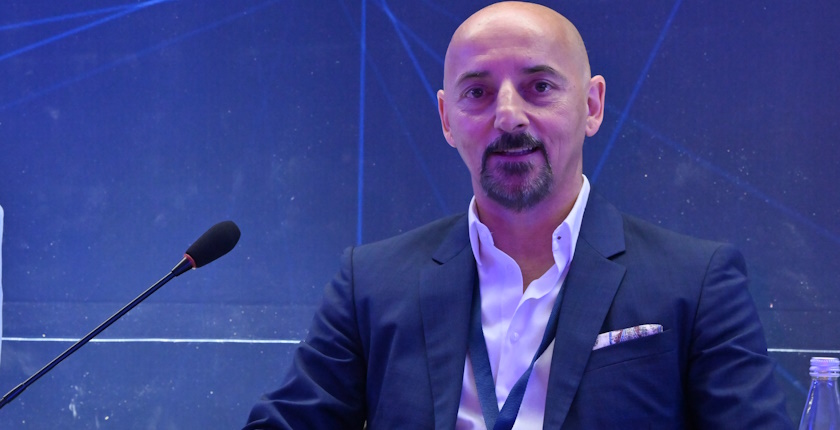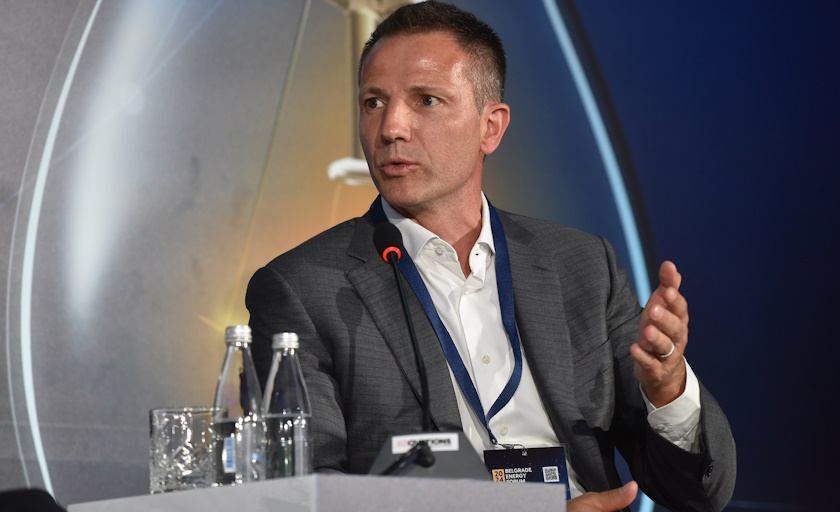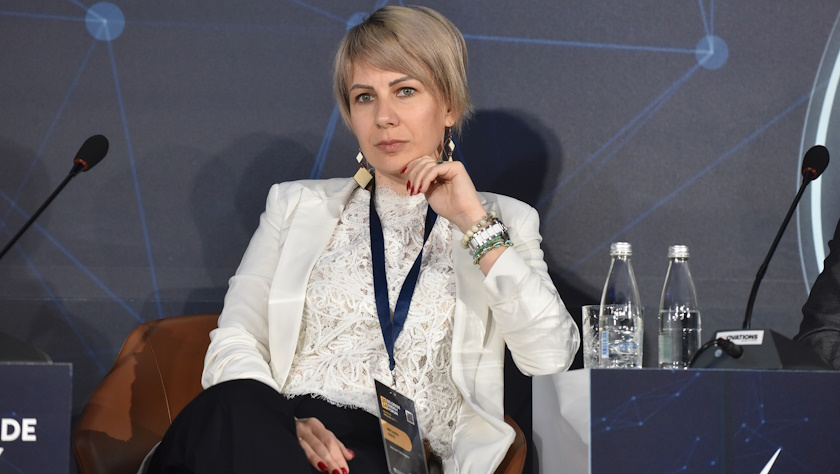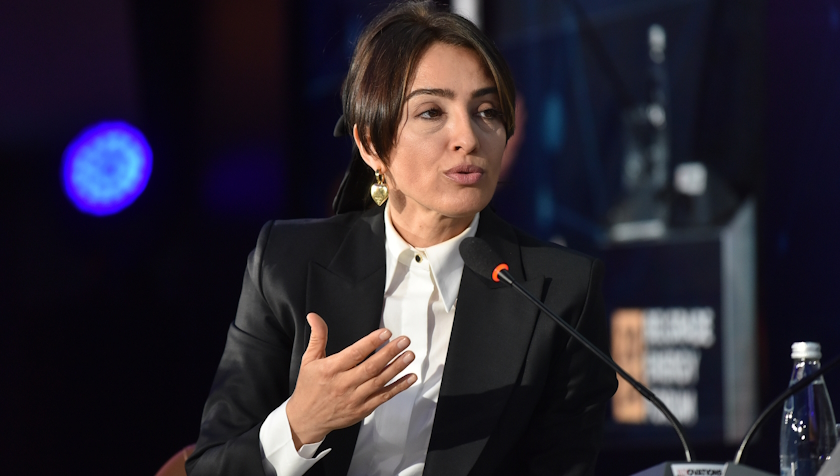
Photo: Balkan Green Energy News
Companies in Serbia are not afraid of decarbonization and the European Union’s Carbon Border Adjustment Mechanism (CBAM), but they are worried that the state does not recognize what needs to be done to help the affected industries protect jobs and maintain competitiveness. Producers of cement, steel, aluminum, and mineral fertilizers claim they need neither money nor new technologies to enter the CBAM era unharmed. What they need is for Serbia to align its regulations with the EU and apply them consistently, which should encourage the development of a circular economy, facilitate investments in green energy, and protect the domestic market against unfair competition.
These are the key messages from a panel titled ‘Decarbonizing industry and business in response to Green Agenda and carbon pricing,’ held as part of Belgrade Energy Forum – BEF 2024, which gathered more than 500 participants from 30 countries.
The Carbon Border Adjustment Mechanism (CBAM) imposes tariffs on certain goods imported into the EU. The levy is based on the emissions of CO2 and other greenhouse gases released during the entire life cycle of a product, including production.
Since October 1, 2023, producers of aluminum, fertilizers, cement, steel, and hydrogen, as well as electricity exporters, have been required to measure the CO2 emissions released during the production of the goods they export to the EU. Starting on January 1, 2026, they will be obliged to pay the EU’s carbon border tax.
CBAM will affect more than 15,000 people employed directly in four industries in Serbia, and over 50,000 employed indirectly
The first to be affected are the so-called scope 1 emissions – direct emissions released in the production process, during the extraction of raw materials, from precursors (intermediate products), and from the processing of raw materials using technology and energy. The taxation of indirect emissions – those from electricity used in the production process – will begin at a later stage. Producers of aluminum, steel, mineral fertilizers, and cement will be the first to be hit by CO2 taxes, together with state-controlled power utility Elektroprivreda Srbije (EPS), an exporter of electricity.
The implementation of CBAM will affect more than 15,000 people directly employed in these industries in Serbia, and over 50,000 employed indirectly, according to estimates by domestic companies whose representatives spoke at BEF 2024.
They presented their efforts to reduce CO2 emissions and suggested what regulations the state should adopt or implement. Together, they employ about 5,000 people directly, and about 15,000 indirectly. The introduction of the carbon border tax can change their business overnight and jeopardize jobs.
These companies intend to set up an association of the energy-intensive industries that are subject to CBAM in order to act together, offer solutions, and overcome the challenges in partnership with the state.
Cement producers do not need subsidies, but regulations enabling decarbonization

In European countries, cement producers are spearheading decarbonization, with the best projects receiving support from EU funds. For example, a project of the Koromačno cement plant in Croatia is 50% funded by the EU, and the total value of the investment is EUR 250 million.
In the cement industry, the primary source of emissions is calcium carbonate from the raw material, stone, as it releases CO2 when heated. The second source is the burning of coal, coke, and other fuels to obtain thermal energy, and the third is logistics, or transport. “This last source can be solved with electric trucks, but with the first two, everything is in the hands of the regulator,” says Dimitrije Knjeginjić, CEO of Lafarge Serbia.
Knjeginjić: We don’t need to invent solutions – they already exist
He stresses that the cement industry in Serbia does not need additional financial resources or subsidies to reduce CO2 emissions faster.
“We don’t need someone to invent solutions – they already exist – nor do we need to reinvent the wheel. We only need to apply what already exists in the EU, to copy their laws come January 1, 2026,” claims Knjeginjić.
Not much has changed since the previous Belgrade Energy Forum, so the industry is still facing the same obstacles on the path to decarbonization and the use of alternative fuels.
For example, Lafarge Serbia has entered the third year of waiting for Elektromreža Srbije to respond to a request regarding a planned solar power plant.
“However, even if we got to build those 26 MW, that would cover 9% of our annual electricity consumption, and we would still have to buy the remaining 91% on the market, from producers with green certificates,” he stated.
The cement industry is the biggest advocate of applying all the principles of the circular economy, he asserted, explaining that cement plants come at the end of the chain.
“Everything that can’t be recycled, and is bound for landfills, ends up with us. We’re trying to convince the authorities to clear at least three cement plants in Serbia for cogeneration. This would allow part of the waste from Ćuprija, Jagodina, and Paraćin to be sent to the cement plant in Popovac, the waste from Požega, Kosjerić, and Užice to go to the cement plant in Kosjerić, and the waste from Novi Sad and all surrounding municipalities to be sent to Beočin. In this way, the waste would be used to produce energy, as a substitute for fossil fuels,” explained Knjeginjić.
Zečević: The only way to survive January 1, 2026 is to apply EU regulations

Steel industry representatives warn that in the absence of a national carbon pricing scheme, the introduction of CBAM will result in the Serbian market being flooded with products from countries where these duties are not levied. This already happens from time to time, and there is no adequate protection against it, says Branko Zečević, President of Metalfer Group.
If the EU charges a certain duty on CO2 emissions from imported products, then Serbia must do the same. Otherwise, from January 1, 2026, there will be streams of products whose import into the EU has been blocked, and whose producers will be looking for other markets to sell their goods, according to Zečević. No company and no industry can fight against such dumping, he assessed.
Metalfer realized a few years ago what CBAM would bring, and it invested heavily in decarbonization, he noted. Thanks to these measures, the company today has the lowest carbon footprint per ton of steel produced in all of Europe, according to available data, he claims.
Although this will make it easier to export to the EU, Zečević warns that if the Serbian market remains completely open, it will be flooded with dirty technologies.
“We don’t need to invent anything new, we just need to apply the same regulations that exist in the EU. This is the only way we can survive January 1, 2026”, he stated.
Instead of building our own circular economy, we export the raw material to someone else, who builds theirs, and then we import the finished product
One of the main problems for the cement and steel industries is the export of waste products that could be reused in production, while on the other hand, products with maximum CO2 emissions are imported, according to representatives of these companies. They make efforts to use as much recycled products as possible, but they face problems with the availability of raw materials, they revealed. This includes waste steel, an important tool for decarbonizing production.
Zečević explains that Serbia’s Law on Waste Management prohibits the export of the types of waste that can be processed domestically.
“In practice, however, these are exported. Export licenses are issued. And this applies not only to waste steel but also copper, aluminum, and slag that could be processed in the country. Instead of building our own circular economy, we export the raw material to someone else, who builds theirs, and then we import the finished product,” he noted.
Predojević: Improving circularity is an important tool for decarbonization

The production of mineral fertilizers is another sector that will undergo major changes when the EU starts charging the carbon border tax in 2026, according to Elixir Group, which has plants in Šabac and Prahovo.
Elixir Group’s Prahovo plant, one of six in Europe that produce phosphoric acid, which is used mainly in agriculture, initiated a decarbonization process a few years ago.
The company exports about 70% of its output, with about 50% going to the EU market.
“We already regularly report on CO2 emissions. We also have large customers from the EU, specifically in the chemical industry, who request our data for their own calculations,” said Matthias Predojević, Vice President for Corporate Development at Elixir Group.
He reveals that the company plans to build a new phosphoric acid factory, as the largest consumer of this acid, noting that 10 MW of electricity and more than 50 MW of thermal energy is consumed in the Prahovo plant.
Elixir Group regularly reports on its CO2 emissions
“For decades, businesses were guided by the optimum capex-opex [capital and operating expenditure]. But today, it pays off to invest more if you have better utilization of raw materials or if the technology is flexible for the use of some secondary raw materials. We strive for all our plants to be integrated, so that a by-product from one plant can be used in another. Circularity does not end inside the factory. For example, phosphoric acid can be recovered even after several cycles. There are companies that use it, both in Serbia and in the EU, so it is no longer waste, but a secondary raw material,” he stated.
The company also plans to build an industrial waste incinerator. Currently, this waste is exported to Austria, Switzerland, and Germany, as there are no suitable treatment facilities in Serbia. “We have toured plants in Europe, identified a technology with high energy efficiency, and started developing projects. We are now working with the Ministry of Environmental Protection on obtaining permits,” Predojević said.
He also revealed that Elixir plans to use 300 hectares of land in Prahovo, by the Danube, to build a solar power plant, a wind farm, and a battery storage facility in order to balance its own electricity production and prepare for the period after 2026.
Jukić: Without green certificates, our hands are tied

One of the key demands of the energy-intensive industries affected by CBAM is faster permitting if they invest in their own electricity production. Although they have different experiences with investments, they share the view that improvements in this field are necessary.
Messer Tehnogas, which produces technical gases, is most exposed to the effects of CBAM through its electricity consumption. “We are among the cleanest industries, but the year 2026 and scope 1 are around the corner, and scope 2 will be there soon after that. We will solve the issue of transportation, and our raw material is clean. But there remains electricity, which must be certified in some way, and our hands will be absolutely tied,” says Mirjana Jukić, Head of Procurement at Messer Tehnogas.
According to her, companies will likely have to seek ways to ensure alternative sources of energy on their own. According to Jukić, EPS’s transition to sustainable sources will be very slow. It has started, and that is great, but it is progressing very slowly, she noted.
The main challenge for Messer Tehnogas is to ensure the supply of green electricity
Jukić says the company has installed solar panels in most of its locations, with a total capacity about 1.5 MW, but that they cover only about 2% of its electricity consumption.
“We can’t cover our consumption from our own sources, and it’s very complicated if we want invest further because it’s difficult to obtain various permits to build solar power plants on our own plots,” she added.
She pointed out that companies are not asking for incentives or funding for their investments. They only want the state to facilitate the existing system and apply the laws properly so that companies can actually use the facilities they want to build.
“Messer’s consumption is ideal for solar, because we don’t have a great need for balancing. By building our 15 MW solar power plant, we would cover a third of our consumption. If the entire economy undertook to generate green energy in this way, we would have a double benefit – the consumption of electricity from dirty sources would be reduced and CO2 emissions lowered, while companies would get green energy along with export incentives and certificates,” Jukić concluded.
Metalfer Group has a similar experience with investments in renewable energy, having installed 3 MW of solar on its roofs. However, according to Zečević, this is a drop in the ocean compared to electricity consumption in steel production, especially at peak times.
“The idea is to cover at least a portion of the consumption with our own production, which also brings us green certificates. I know that [the state] is looking to promote prosumers and legislative changes, but it should be much faster,” he noted. Also, according to him, those producing electricity for the market and those who produce it for self-consumption should not be treated the same. “We should have faster and easier procedures, especially if the energy is not delivered to the grid,” he stated.
Barbulov: Levying CO2 taxes in Serbia requires full implementation of the Law on Climate Change

As far as the state is concerned, the impression is that CBAM has so far been viewed primarily through the administrative and legislative framework, according to speakers at the panel. Among other things, the introduction of the mechanism means that the state has the obligation to align its climate policy with the EU.
This involves harmonizing its ambitions by completing and finalizing the Law on Climate Change, adopted in 2021. By the end of 2023, three by-laws had been adopted. However, more secondary legislation is needed for the law to be fully enforced, so that Serbia can implement its own internal measurement and verification mechanism, which would be overseen by its own accredited institutions, according to Ankica Barbulov, Director of Negawatt Solutions, who moderated the panel.
Completing the law also means establishing a system very similar to the EU Emissions Trading System (EU ETS) so that CO2 taxes can be charged within the country.
“That would help preserve the competitiveness of the economy by safeguarding our production from unfair competition. In the same way Europe is protecting itself, we also need to shield ourselves from imported products that are not subject to CO2 taxation,” added Barbulov.


















Be the first one to comment on this article.